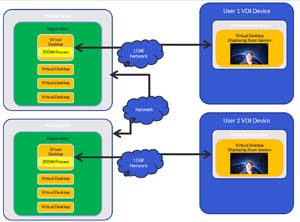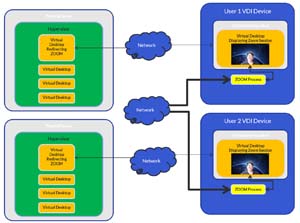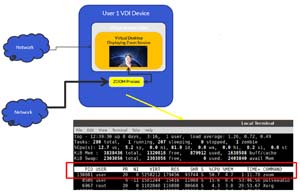How-To
Why Is Multimedia Redirection (MMR) So Important?
Using MMR, a Unified Communications program runs on the VDI device instead of the ESXI host, increasing the guest density of the host and thus reducing the cost of running each virtual desktop.
One of the lessons we have learned during the pandemic is how important unified communication (UC) tools such as Zoom, MS Teams, Skype, etc. are to us. There are two corollaries that also fit in with this lesson: Virtual desktops were an indispensable tool to quickly allow employees to work remotely; and UC programs are huge consumers of compute resources. These corollaries could have been a huge issue, but companies that supply virtual desktop infrastructure (VDI) realized this issue a few years back and developed Multimedia Redirection (MMR).
When using UC on a virtual desktop without MMR, the UC program runs on the virtual desktop, just as any other program. This requires the virtual desktop to have not only the CPU capacity to run the UC program but also requires the bandwidth to support it.
The diagram below shows that the VDI client device being used by User 1 is displaying the UC session (Zoom) which is being transmitted from the virtual desktop. The virtual desktop is connected to the second user of the Zoom (User 2), which in this case is also on a virtual desktop. User 2 virtual desktop is being displayed on the VDI client.
 [Click on image for larger view.]
[Click on image for larger view.]
Not only does the above scenario require CPU usage from the ESXi host and increase the latency of the UC connection, it also put additional burden on the network. This decreases the guest density for a given host, thereby increasing the cost of each virtual desktop.
Using MMR, the UC program runs on the VDI device instead of the ESXI host, thereby relieving the host of that burden and increasing the guest density of the host.
 [Click on image for larger view.]
[Click on image for larger view.]
To get a idea of how much processing I ran a process monitoring tool (Top) on the VDI client that was using MMR to run Zoom. I found that the CPU for the Zoom process was 50 percent. By using the excess capacity of the device, I freed the host of that burden.
 [Click on image for larger view.]
[Click on image for larger view.]
I found that the experience that I had when using Zoom with MMR was just as good, if not better than when Zoom was running on the virtual desktop.
MMR also supports web browsers and other video- and audio-intensive activities. MRR is a powerful technology, but it does require a VDI infrastructure to supports it. Of course, the VDI platform must support it. VMware Horizon has supported it for a while and continues to expand the programs that work with it. In Horizon's latest release (2106), it now supports Microsoft Edge. It should be noted that other VDI vendors such as Citrix and Microsoft support MMR.
Besides being supported by the system the agent, client, as well as the remote desktops and client systems on which you install the agent and client software, must support it.
For my setup I used Horizon 2106, with a Windows 10 virtual desktop, an LG 24CN670NK All-In-One Thin Client that was running IGEL OS.
In today's world with more and more people working remotely and using virtual desktops to do so, it is more important than ever to use our compute resources wisely. I heard that in one study that used the excess capacity of VDI client devices to run MMR, one Horizon customer showed a 10-15 percent increase in guest density on the host. This equates to 10 to 15 more virtual desktops for every 100 virtual desktops that you run.
About the Author
Tom Fenton has a wealth of hands-on IT experience gained over the past 30 years in a variety of technologies, with the past 20 years focusing on virtualization and storage. He previously worked as a Technical Marketing Manager for ControlUp. He also previously worked at VMware in Staff and Senior level positions. He has also worked as a Senior Validation Engineer with The Taneja Group, where he headed the Validation Service Lab and was instrumental in starting up its vSphere Virtual Volumes practice. He's on X @vDoppler.